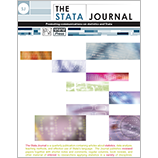Making spatial analysis operational: Commands for generating spatial-effect variables in monadic and dyadic data
Eric Neumayer
Department of Geography and Environment
London School of Economics and Political Science
London, UK
Centre for the Study of Civil War
International Peace Research Institute
Oslo, Norway
[email protected]
|
Thomas Plümper
Department of Government
University of Essex
Colchester, UK
Centre for the Study of Civil War
International Peace Research Institute
Oslo, Norway
[email protected]
|
Abstract. Spatial dependence exists whenever the expected utility of one unit of
analysis is affected by the decisions or behavior made by other units of analysis.
Spatial dependence is ubiquitous in social relations and interactions. Yet, there
are surprisingly few social science studies accounting for spatial dependence. This
holds true for settings in which researchers use monadic data, where the unit of
analysis is the individual unit, agent, or actor, and even more true for dyadic data
settings, where the unit of analysis is the pair or dyad representing an interaction
or a relation between two individual units, agents, or actors. Dyadic data offer
more complex ways of modeling spatial-effect variables than do monadic data. The
commands described in this article facilitate spatial analysis by providing an easy
tool for generating, with one command line, spatial-effect variables for monadic
contagion as well as for all possible forms of contagion in dyadic data.
View all articles by these authors:
Eric Neumayer, Thomas Plümper
View all articles with these keywords:
spspc, spundir, spmon, spdir, spagg, spatial dependence, spatial analysis, contagion, spatial lag, spatial error, monadic data, dyadic data
Download citation: BibTeX RIS
Download citation and abstract: BibTeX RIS
|
